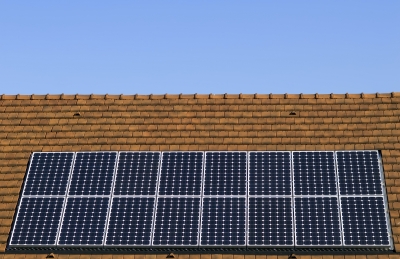
Connection of PV panels to hot water cylinders in homes will provide benefits in terms of carbon performance as well as reduced resident energy bills.
Decarbonisation of the electrical grid is reducing the carbon benefit of installing solar PV on buildings. However, current policy is still encouraging the installation of renewable technologies to help meet carbon reduction targets. As peak solar generation during the day generally does not match times of peak electrical demand, energy storage remains a key technological challenge.
Battery storage is currently an expensive technology to deploy at all project scales and is not installed in the majority of buildings. However, solar energy from PV can be stored thermally by running immersion heaters in hot water cylinders. Affordable devices can be installed that monitor the PV onsite generation, ensuring that any surplus generation that would otherwise be exported back to the grid is used to run the immersion – providing free domestic hot water. This has the potential to significantly reduce hot water costs to residents whilst also ensuring that energy is used on site, especially for houses.
Heat pumps are likely to become a primary heating source for future dwellings, however, these run most efficiently at low temperatures, with increased temperature demands produced by hot water requirements resulting in a drop in performance. Linking solar PV to an immersion heater is therefore likely to produce greater energy cost reductions when integrated into a heat pump system as both technologies are optimised for use.
Posted on April 3rd, 2020
Related services: Energy Statements, Renewable Energy Feasibility Studies,